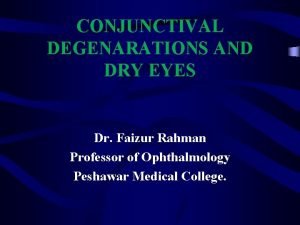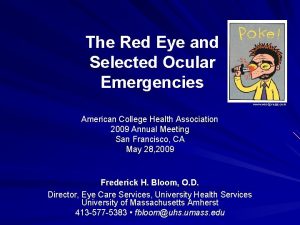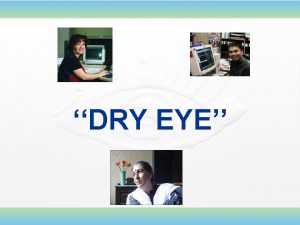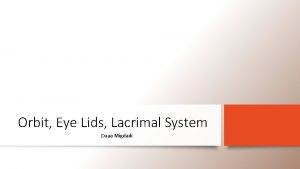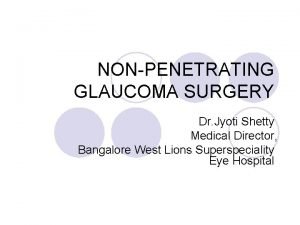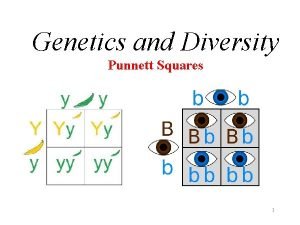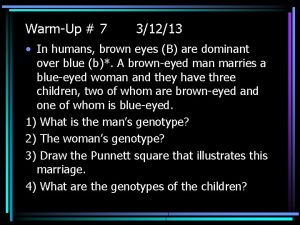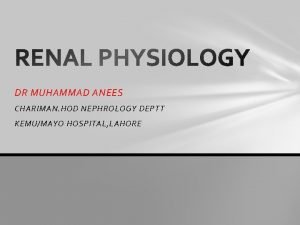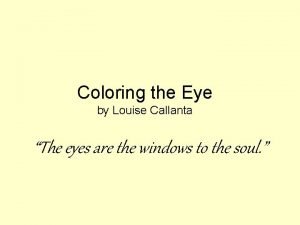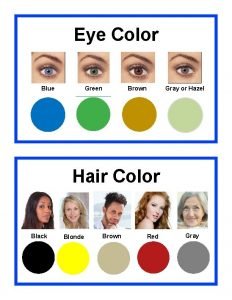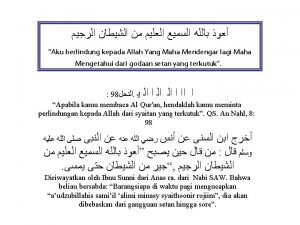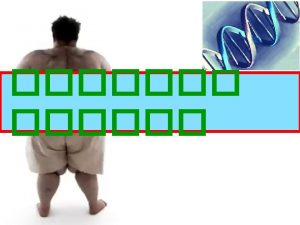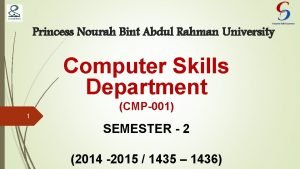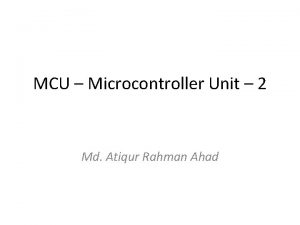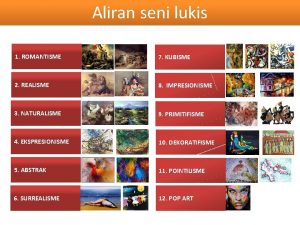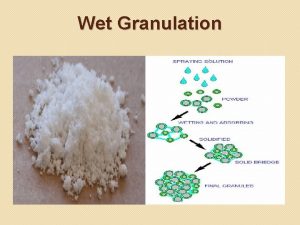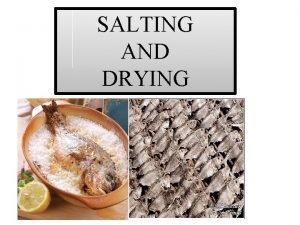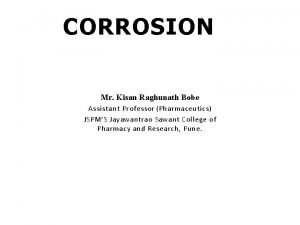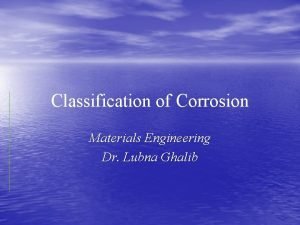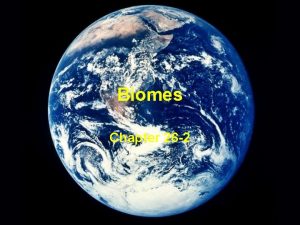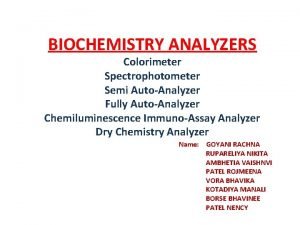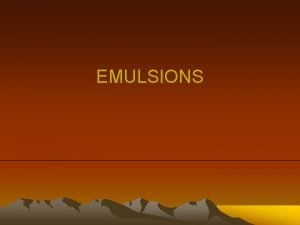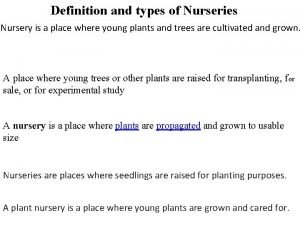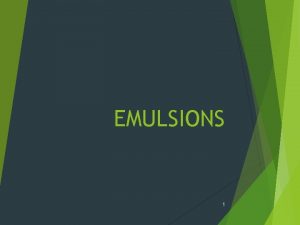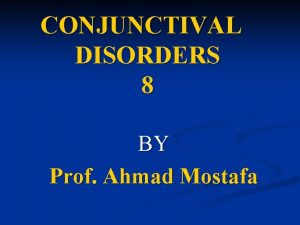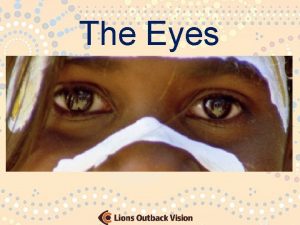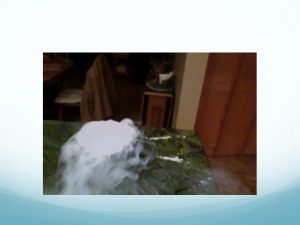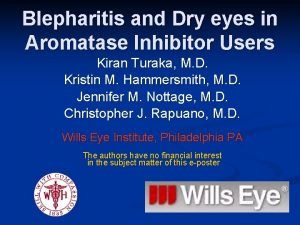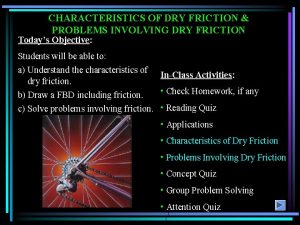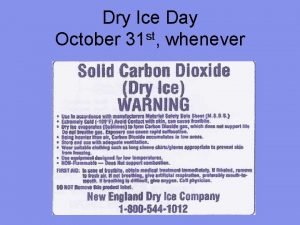CONJUNCTIVAL DEGENARATIONS AND DRY EYES Dr Faizur Rahman


































































- Slides: 66

CONJUNCTIVAL DEGENARATIONS AND DRY EYES Dr. Faizur Rahman Professor of Ophthalmology Peshawar Medical College.

CONJUNCTIVAL DEGENERATIONS • • • Pinguecula. Pterygium. Xerosis. Concretions. Retention cysts.

PINGUECULA • A pinguecula is a benign degenerative tumor, appear as localized elevated area in the interpalpebral fissure on the limbal conjunctiva. • Nasal & bilateral. • Yellow, gray, white, or colorless. • Chronic exposure to the sun. • There is no predilection for sex or race.


PATHOPHYSIOLOGY • Exposure (Toxic vapors, salt water spray, sun). • Insufficient moisture and lubrication (tears). • Elastotic degeneration and deposition of abnormal elastic fibers in the conjunctival substantia propria. • Heredity. • Heat, dryness, wind, dust, smoke, and other irritants.

CLINICAL FEATURES • In most cases, pingueculae are an ancillary finding. • Cosmetic defect. • Corneal punctate epitheliopathy and dellen. • Pingueculitis. • Conjunctiva may become irritated.

MANAGEMENT • • • Mostly it is asymtomatic, so no intervention. Prevention of exposure. Lubricants. Steroids. Surgical resection.

PTERYGIUM • Pterygia are triangular, fibrovascular connective tissue overgrowths of bulbar conjunctiva onto the cornea. • They are horizontally located in the interpalpebral fissure. • Warm, dry climates, or chronical exposure to the sun or smoky/dusty environments. • Pingueculae may precede pterygia.


PATHOPHYSIOLOGY • Drying of the interpalpebral tear film is an important factor. • This exposes the peripheral cornea to destructive effects of the UV light, and the tissue damage thus sustained stimulates the advance of limbal vessels into the cornea. • Drying of interpalpebral film occurs most readily in the medial third of the I/P fissure.

PATHOPHYSIOLOGY • Ultraviolet light exposure (both UV-A and UV-B). • Corneal stromal edema. • Invasion by blood vessels and fibroblast. • Organization of this fibrovascular tissue. • Allergens, noxious chemicals and irritants (e. g. , wind, dirt, dust, and air pollution). • Heredity may also be a factor.

HISTOLOGY • Degeneration of the conjunctival stroma with its replacement by thickened, tortuous elastotic fibers. • Actinically activated fibroblasts invade and fragment Bowman's layer. • Except at its apex, the pterygium is covered by conjunctival epithelium. • Histologically, pterygium development resembles actinic degeneration of the skin.

CLINICAL FEATURES • Cosmetic concerns and surface irritation are the most common complaints. • In most cases pterygia are asymptomatic. • Vascularized pterygium may become red and inflamed. • Irregular ocular surface can interfere with the stability of the precorneal tear film.

CLINICAL FEATURES • • • Pterygium may effect vision. Stocker's line. Persistent foreign body sensation. Diplopia. A pterygium may progress slowly toward axial cornea or may become quiescent.

DIFFERETIAL DIAGNOSIS • • Pinguecula. Pseudopterygium. Conjunctival intraepithelial neoplasia (CIN). Pyogenic granuloma.

MANAGEMENT • Avoidance of the causative factors. • Topical decongestant / antihistamine combinations and/or mild topical steroids. • Surgery

MANAGEMENT…Cont. • Surgical excision of pterygia is indicated only for: 1. Unacceptable cosmoses. 2. Significant encroachment of the visual axis or there is significant astigmatism. 3. A persistent foreign body sensation in the eye. 4. Constant or recurrent inflammation and irritation. 5. Restriction of extraocular muscle movement.

SURGICAL REMOVAL • Surgery is the only way to remove a pinguecula or pterygium. • The recurrence rate is often as high as 50 to 60 percent. • Procedure and outcome.

ARGON LASER PHOTOCAGULATION • Laser treatment early on and for recurrence has been helpful. • Has the advantage of regressing repeated growths for long periods. • The treatment is done in one or two sessions and it is split in two phases: Phase 1: • Direct photocoagulation of the largest vessels. • 50 -100 micron spot.

ARGON LASER PHOTOCAGULATION Phase 2: • The ray is defocused into the body of the growth by using larger diameters (200 -300 micron) and less power (150 -300 m. W) in order to cause a contraction of the fibrous/elastic subconjunctival tissue. • Stable regression in 90% cases has been reported two years after the treatment, and in the case of recurrences, the lesion had a very slow and benign evolution.

RECURRENT PTERYGIUM • Pterygia often persist after surgical removal; These "recurrent pterygia" probably have no relationship to ultraviolet radiation, but rather may be likened to keloid development in the skin. The rate of recurrence is significantly high 50 - 60 percent when a bare sclera excision is performed. • Treatment with autologous conjunctival transplantation has been shown to decrease the incidence of recurrence to about 5 percent.

RECURRENT PTERYGIUM • This rate is usually reduced if surgery is followed by betairradiation with strontium 90. But many complications. • Adjunctive treatment with mitomycin drops or Thiotepa. • In cases that involve significant corneal scarring, lamellar or penetrating keratoplasty may be indicated. • Follow up for pterygia or recurrence is at least once or twice yearly, and include a manifest refraction, corneal topography, slit lamp evaluation with measurement of the pterygium, and photodocumentation if possible.

XEROSIS • Abnormal lid movement, tear hyposecretion (keratoconjunctivitis sicca), or mucus deficiency. Malnutrition. • Epidermalization with keratin formation. • Xerophthalmia, the result of prolonged deficiency of Vitamin A. • Loss of the mucus-secreting conjunctival goblet cells • Squamous metaplasia of conjunctival epithelial cells. • Conjunctival xerosis is typically bulbar in distribution. • Bitot's spots. • Conjunctival xerosis and Bitot's spots can be reversed.



CONCRETIONS/ LITHIASIS • Degenerations of conj. epithelium in elderly or prolonged conjunctivitis or meibomian gland disease may cause yellowish to white concretions in the epithelium. • The deposits may be seen as linear streaks in the palpebral conjunctiva or as minute spheres in the inferior fornix. • FB sensation.


RETENTION CYST • Lymphatic channels of the conjunctiva may become dilated and cause serous conjunctival cysts filled with clear fluid. • Mostly asymptomatic and if indicated can be punctured with a needle.



DRY EYES • Dry eye syndrome (DES) is a common disorder • Quantitative or qualitative deficiency in the tear film.

DRY EYES • 3 Layers of tear film: – Lipid layer --- 0. 11 microns. Meibomian glands. – Aqueous layer --- 7. 0 microns. Lacrimal glands. – Mucin layer ---0. 02 -0. 5 microns. Goblet cells. • Defective or deficient tear film will result in a dry eye.

Tear Film

CAUSES • Aqueous tear layer ( KCS): 1. CONGENITAL: – Aplasia or hypoplasia of lacrimal gland. – Riley-day syndrome (Dysautonomia). – Anhidrotic ectodermal dysplasia. – Aplasia of lacrimal nerve nucleus. – Multiple endocrine neoplasia.

CAUSES (contd. ) 2. ACQUIRED: • Senile or idiopathic atrophy of lacrimal gland. • Postsurgical. (Blepharoplasty, Dacryoadenectomy) • Traumatic, inflammatory or neoplastic lesions of lacrimal gland. • Neuro-paralytic lesions: Facial nerve, Geniculate ganglion, Spheno-palatine ganglion, Greater Superficial petrosal nerves, Trigeminal nerve and Gasserian ganglion. • Nutritional and debilitating disorders : Typhus, cholera, starvation, ascorbic acid and vit. B 12 deficiency.

CAUSES (contd. ) • Systemic Diseases: – Connective tissue disorders (R. A, SLE, Periarteritis nodosa, Scleroderma). – Endocrine disorders (Hashimoto‘s disease, Menopause). – Renal diseases (Renal tubular acidosis, Diabetes insipidus). – Blood disorders (Hemolytic anemia, Hypergammaglobinemia, Felty‘s syndrome, Malignant lymphoma, Lymphoid leukemia, Lymphosarcoma, Chronic hepatitis, Primary biliary cirrhosis). – Skin and muco-cutaneous disorders (Sclerodera, erythema multiforme, Exfoliative dermatitis, Cicatricial pemphigoid). – Miscellaneous (Sarcoidosis, Amyloidosis, Lipodystrophy)

CAUSES (contd. ) • Mucin tear layer: – Vit. A deficiency. – Trachoma. – Diphtheric kerato-conjunctivitis. – Chemical, thermal and radiation injuries of conjunctiva. – Topical medications—Echothiophate iodide, Sulphonamides etc

Causes (contd. ) • Lipid tear layer: – Chronic conjunctivitis. – Acne rosacea. Other and newer causes: *After cataract extraction *After PRK *Contact lens wear

Associated with: • • Connective tissue diseases Steven Johnson syndrome Vit. A deficiency AIDS Hepatitis C Polycystic ovarian syndrome Post radiation (damage to salivary gland)

VITAMIN A DEFICIENCY • Nactylopia is often the presenting symptom. • Decreased mucus production by goblet cells. • Xerosis—Dryness of conjunctiva and cornea. • Bitot‘s spot---Metaplastic keratinization of areas of conjunctiva. • Corneal ulcers and scars. • Kerato-malacia, corneal necrosis.

VITAMIN A DEFICIENCY • Bitot‘s spot is a superficial, foamy, triangular area in the conjunctiva, in the interpalpebral aperture. It consists of keratinized epithelium, inflammatory cells, debris and Coryne - bacterium Xerosis. • Acute vit. A deficiency (keratomalacia) is a medical emergency with an untreated mortality rate of 50%.


SJOGREN SYNDROME • PRIMARY: Aqueous tear deficiency associated with dry mouth (xerostomia). • Serology for – Rh factor – Antinuclear antibody – Salivary gland Biopsy.

SJOGREN SYNDROME • SECONDARY: Aqueous tear deficiency associated with definite Connective tissue disease. • Multisystem autoimmune disease, most commonly associated with Rh. arthritis. • There is an autoimmune infiltration of lacrimal and salivary glands by lymphocytes. • Lacrimal gland biopsy.

MIKULICZ‘S SYNDROME • Enlargement of lacrimal / salivary glands or both, owing to systemic diseases, such as Leukemia, Lymphoma or Sarcoidosis.

DRUGS • Many systemic drugs can decrease aqueous tear production: – Antihistamines, – Hypnotics, – Phenothiazines, – Psychotropics, – Halothane, – Antimuscarinics (atropine), – Beta blockers (timolol), – Hexamethonium, – Nitrous Oxide etc.

CLINICAL FEATURES OF DRY EYES • SYMPTOMS: – Grittiness, Itching, Burning sensation, Foreign body sensation and photophobia – Redness of the eyes. – Reflex lacrimation. – Blurred vision. – Stringy mucus secretion. – Severe pain ( Filamentary keratopathy ).

CLINICAL FEATURES OF DRY EYES • Worsening Factors: – Prolonged use of eyes e. g; prolonged reading, watching TV, excessive computer use. – Symptoms worsen in the morning and towards the end of the day. – Temperate climate, during winter. – Lower levels of humidity (Indoor heating systems ), smoky and dry environment like kitchen, busy street and outdoor work. – Air-conditioned atmosphere

CLINICAL FEATURES OF DRY EYES • SIGNS: – Decreased tear meniscus and irregular edges or scalloped appearance along the lid margin. Normal height --- 1 mm. Concave tear meniscus. – Viscous and stringy mucous due to debris in the tear film. – Increased debris and foam in tear film. – Xerosis ( dry conjunctiva ) and Bitot‘s spots. – Hyperemia and Papillary conjunctivitis

CLINICAL FEATURES OF DRY EYES – Irregular corneal surface ( fine, granular, coarse or confluent epithelial keratopathy ). – Severe cases--- Corneal ulcer and bacterial colonization causing suppurative keratitis --- Perforation. – Secondary infection is also aided by deficiency of lysozyme and other antibacterial agents. – Inadequate or insufficient blinking. – Filaments and mucous plaques. Filaments are strands of epithelial cells attached to the surface of cornea. Painful.

CLINICAL FEATURES OF DRY EYES • ASSOCIATED SIGNS: – Blepharitis secondary to changes in the lipid layer and destablization of tear film. Exotoxins by Staphylococci. – Lid changes eg. Lagophthalmos, reduced blinking or lid damage may cause or increase symptoms of Dry Eye. – Contact lens wear or the toxicity of preservatives may also exacerbate the symptoms

DIAGNOSTIC AIDS FOR CLINICAL DIAGNOSIS • TEAR FILM BREAK-UP TIME : – Sodium fluorescein. – Appearance of first dry spot ( randomly distributed ). – Normal B. U. T. ---- 10 seconds or more.


• SCHIRMER TEST: – Whatman filter paper ( 5 mm. Wide and 35 mm. Long ). – 5 minutes. • Schirmer test 1. --- without topical anaesthesia. Both reflex and basic secretion. Less than 10 mm. wetting is diagnostic of tear deficiency. • Schirmer test 2. ---With topical anaesthesia. Basic secretion.


• ROSE BENGAL STAINING: – Stains dead and degenerating epithelial cells, and reveals conjunctival keratinization, mucus particles and strands, filaments and plaque. – 1% R. B. dye (solution or strips ). Wait for 30 sec. Wash the excess dye. • • GRADE 1: Staining of lower ¼ cornea. GRADE 2: Staining of half of the cornea. GRADE 3: Staining of ¾ of the cornea. GRADE 4: Staining of whole of the cornea



TREATMENT • First treat the underlying conditions responsible eg. Vitamin A deficiency, Blepharitis, lid abnormalities, etc. • Avoid using any ophthalmic medication with preservatives, if possible. • Lid massage, warm compresses, lid scrub, lid hygiene etc.

TREATMENT (contd. ) • TEAR PRESERVATION: – Reduction of room temperature. – Room humidifiers and moist chamber goggles. – Correction of lid deformities surgically. – Lateral tarsorrhaphy--- temporary and permanent

TREATMENT (contd. ) • TEARS REPLACEMENT THERAPY: – Lubricating the eyes --- artificial tears. – Most of the preservatives are toxic to corneal epithelium eg. Benzalkonium chloride, and can aggravate the dry eye symptoms. – More frequent the use, more is the need of tear replacement therapy. – Less toxic preservatives --- Polyquad. No effects on cells. – Changing preparations to find the most suitable one.

TREATMENT (contd. ) • 2 groups of artificial tears: a. Demulcents. b. Emolients. • They form an occlusive film over the corneal surface to lubricate and protect the eye from drying. • Demulcents: PVA, Cellulose, Methylcellulose. Derivatives like hydroxypropyl cellulose, hydroxyethyl cellulose, hydroxypropylmethyl cellulose. • Unit dose and multi-dose preparations. No presevatives in unit dose preparations. • Emolients: Ointments prepared with sterile petrolatum, liquid lanolin, mineral oil. Different preservatives are also added.

TREATMENT (contd. ) • An ideal tear substitute should be slightly alkaline, hypotonic, contain mucomimmetic polymers and preservatives, which are nontoxic to corneal epithelium. Aim should be at providing nourishment to the corneal and conjunctival surfaces as well as revitalizing the tear secretion system. • Lacriserts are slow release concentrated pellets, which may be irritating to the patient. • Topical Cyclosporin, oral steroids, cholinergic drugs increase the tear secretion from lacrimal gland.

TREATMENT (contd. ) • REDUCING TEAR DRAINAGE: – Tears can be preserved by decreasing tear drainage. – Temporary or permanent punctual occlusion can be done, using Collagen implants, absorbable sutures, Silicone punctual plugs (Harrick‘s plugs). – Cautery, Laser, Cyanocrylate glues can also be used.

TREATMENT (contd. ) • MUCOLYTIC AGENTS: – Acetylcysteine 5% eye drops. 4 times a day. • OTHER MEASURES: – Mucous membrane grafting---Transplantation of autologous nasal mucous membrane has been shown to give good results. – Keratoprosthesis or keratoplsty. – Parotid duct transplantation. Not advocated now.

THANK YOU
 Dr faizur rahman
Dr faizur rahman Circumciliary congestion and conjunctival congestion
Circumciliary congestion and conjunctival congestion Conjunctival injection
Conjunctival injection Sicca
Sicca Enophthalmos definition
Enophthalmos definition Non penetrating glaucoma surgery
Non penetrating glaucoma surgery Fornix eye
Fornix eye Genotype and phenotype
Genotype and phenotype Brown eyes are dominant to blue eyes
Brown eyes are dominant to blue eyes Dr anees nephrologist
Dr anees nephrologist Can two blues make a brown
Can two blues make a brown Eye color hazel
Eye color hazel Mizanur rahman pilot
Mizanur rahman pilot Md taibur rahman
Md taibur rahman Sk temenggong abdul rahman
Sk temenggong abdul rahman Dr shayan rahman
Dr shayan rahman Dr shayan rahman
Dr shayan rahman Hafizur rahman
Hafizur rahman Dr hasan hafizur rahman
Dr hasan hafizur rahman Alhamdulillahi rahmanir rahim
Alhamdulillahi rahmanir rahim Auzu billahi minashaitanir rajim
Auzu billahi minashaitanir rajim Qulid ullah awid ur rahman artinya
Qulid ullah awid ur rahman artinya Abdur rahman chughtai
Abdur rahman chughtai Allah'ın rahman ve rahim isimlerinin yansımaları
Allah'ın rahman ve rahim isimlerinin yansımaları Md mizanur rahman dream paris
Md mizanur rahman dream paris Surah rahman madani
Surah rahman madani Pondok pesantren ar rahman
Pondok pesantren ar rahman Hasan hafizur rahman
Hasan hafizur rahman Sekolah tunku abdul rahman alor setar
Sekolah tunku abdul rahman alor setar Tol ciranjang padalarang
Tol ciranjang padalarang Harmein rahman
Harmein rahman Jason rahman
Jason rahman Hafidz rahman teacher
Hafidz rahman teacher Rahman biology classes
Rahman biology classes Gstt johor
Gstt johor Entrepre meaning
Entrepre meaning Ar rahman bedeutung
Ar rahman bedeutung Anjum asim shahid rahman
Anjum asim shahid rahman Mizanur rahman
Mizanur rahman Mahmood rahman md
Mahmood rahman md Mizanur rahman
Mizanur rahman Vedic village architecture
Vedic village architecture Pics
Pics Shahed rahman
Shahed rahman Basyaruddin rahman motik
Basyaruddin rahman motik Pineal tumor
Pineal tumor Pelukis aliran romantisme
Pelukis aliran romantisme Roots and tubers should be stored dry and unpeeled
Roots and tubers should be stored dry and unpeeled Wet granulation and dry granulation
Wet granulation and dry granulation Keeping your hands clean and dry persuasive essay
Keeping your hands clean and dry persuasive essay Trim and stability
Trim and stability Methods of salting fish
Methods of salting fish Types of water cooling system in engine
Types of water cooling system in engine What is the bottle method for preparation of emulsion
What is the bottle method for preparation of emulsion Wet granulation and dry granulation
Wet granulation and dry granulation Dry corrosion and wet corrosion
Dry corrosion and wet corrosion Difference between dry and wet corrosion
Difference between dry and wet corrosion A biome that is cold, dry and treeless.
A biome that is cold, dry and treeless. Semi automated spectrophotometer
Semi automated spectrophotometer How do peeta and katniss gain haymitch's support?
How do peeta and katniss gain haymitch's support? Rowenta pro 1500w wet and dry
Rowenta pro 1500w wet and dry Wet bundh diagram
Wet bundh diagram Explain theories of emulsification
Explain theories of emulsification Nurseries definition
Nurseries definition I am covered in dry scales and i lay eggs. what am i?
I am covered in dry scales and i lay eggs. what am i? Use in wet and dry land preparation
Use in wet and dry land preparation Oligeneous
Oligeneous
